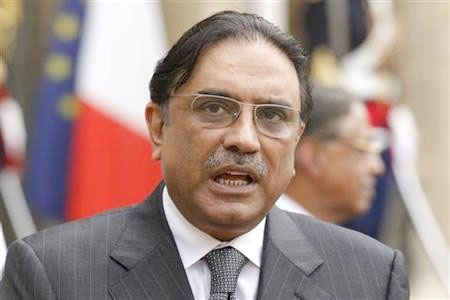 BRUSSELS: Pioneering Swiss solar-powered aircraft Solar Impulse landed in Brussels on Friday after completing its first international flight, 13 hours after it took off from Switzerland.”I captured more energy than I used,” said pilot Andre Borschberg as he descended from the plane amid the applause of hundreds of people including Belgium’s Crown Prince Philippe, who had followed Solar Impulse’s long descent from a helicopter.”I flew with the power of a scooter,” Borschberg added.”This is wonderful,” said Bertrand Piccard, joint founder and president of the Solar Impulse project.The single-seater had lifted off gently in clear blue skies from Payerne airbase at 8:40 am (0640 GMT) after being delayed by early morning mist.It covered the roughly 480 kilometres (300 miles) from western Switzerland to Brussels airport, flying over France and Luxembourg at 3,600 metres (11,880 feet).”With this flight, we would like to encourage politicians to opt for more ambitious energy policies,” Piccard told AFP before the aircraft landed.
BRUSSELS: Pioneering Swiss solar-powered aircraft Solar Impulse landed in Brussels on Friday after completing its first international flight, 13 hours after it took off from Switzerland.”I captured more energy than I used,” said pilot Andre Borschberg as he descended from the plane amid the applause of hundreds of people including Belgium’s Crown Prince Philippe, who had followed Solar Impulse’s long descent from a helicopter.”I flew with the power of a scooter,” Borschberg added.”This is wonderful,” said Bertrand Piccard, joint founder and president of the Solar Impulse project.The single-seater had lifted off gently in clear blue skies from Payerne airbase at 8:40 am (0640 GMT) after being delayed by early morning mist.It covered the roughly 480 kilometres (300 miles) from western Switzerland to Brussels airport, flying over France and Luxembourg at 3,600 metres (11,880 feet).”With this flight, we would like to encourage politicians to opt for more ambitious energy policies,” Piccard told AFP before the aircraft landed.
He also called for “a change in mentalities to encourage people to use new (green) technologies” and stop wasting fossil energies.”It is crazy that mankind wastes a billion tonnes of oil an hour,” he added. “Who wants to believe that we will keep planes that burn up so much fuel?””The flight is going really well, I have just flown over Liege, it’s a real pleasure to enter Belgian airspace,” Borschberg said as the dragonfly-like experimental and emissions-free aircraft cruised at 50 kilometres (31 miles) per hour.”The view I have here is extraordinary,” the Swiss pilot added in a live feed over the Internet. “I’m above the clouds, for now I’m taking advantage of the blue sky.”Solar Impulse HB-SIA, which has the wingspan of a large airliner but weighs no more than a saloon car, made history in July 2010 as the first manned plane to fly around the clock and through the night on the sun’s energy.It holds the endurance and altitude records for a manned solar-powered aeroplane after staying aloft for 26 hours, 10 minutes and 19 seconds above Switzerland, flying at 9,235 metres (30,298 feet).
The high-tech plane has since flown several times, notably between Geneva and Zurich airports, but the journey to a busy airport in Brussels through crowded airspace was regarded as a new test.”Flying an aircraft like Solar Impulse through European airspace to land at an international airport is an incredible challenge for all of us, and success depends on the support we receive from all the authorities concerned,” said Borschberg, who also piloted July’s flight.HB-SIA relies on 12,000 solar cells on its 64-metre (200-foot) wings to charge the batteries that provide the energy for the 10-horsepower electric motors driving four propellers.Its record-breaking flight last year demonstrated its capacity to store up enough energy to fly through a summer night.The showcase for green technology will be on display at Brussels airport until May 29 before flying to the international air show at Le Bourget in Paris from June 20 to 26.”This time, we have a real airplane — flying — proof that new technologies can reduce our dependence on fossil energy,” said Piccard.The Solar Impulse team is planning to fly even further, including possible transamerican, transatlantic and round-the-world flights — in stages — in 2013 and 2014 using a slightly larger aircraft.Asked about upping the speed, Borschberg said: “That’s not the aim of this plane for now.”Piccard, himself the first man along with Briton Brian Jones to fly non-stop around the world in a balloon, comes from a dynasty of pioneers.His grandfather Auguste Piccard twice beat the record for reaching the highest altitude in a balloon, in 1931-32.His late father Jacques Piccard was a deep sea explorer who holds the record for travelling to the deepest point underwater, 10,916 metres (35,813 feet) below sea level in the Marianas Trench in the Pacific. – Yahoonews












